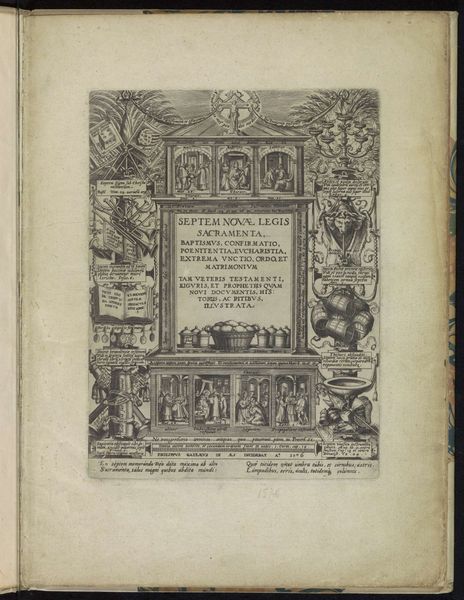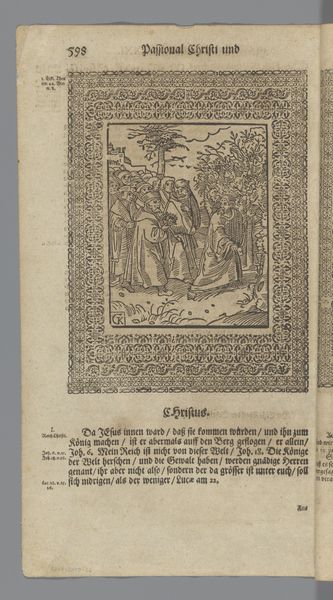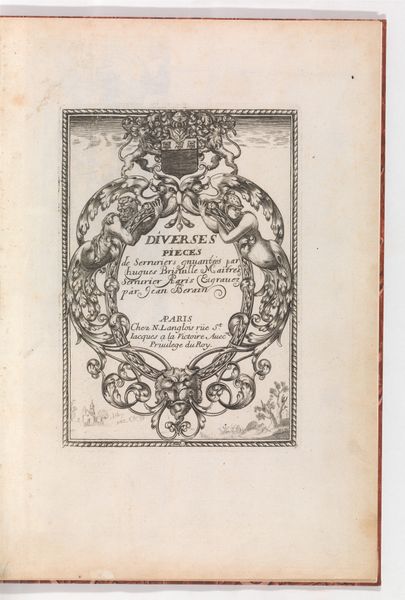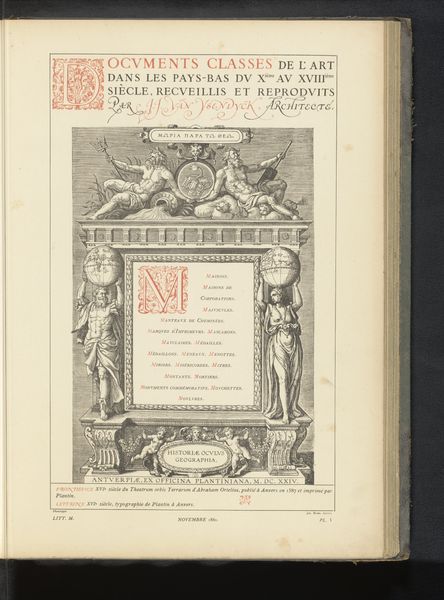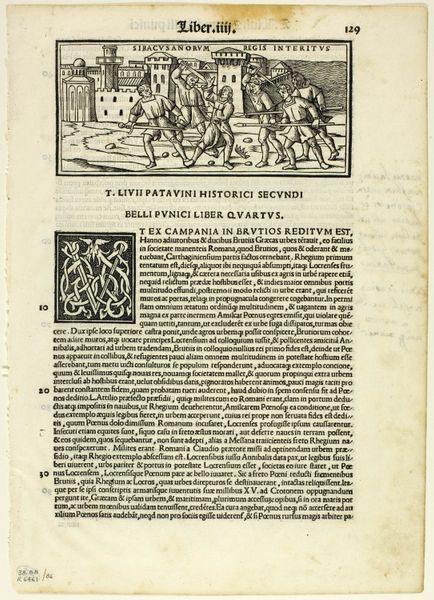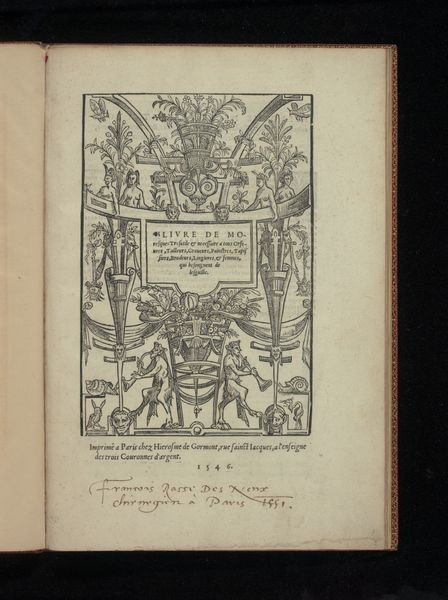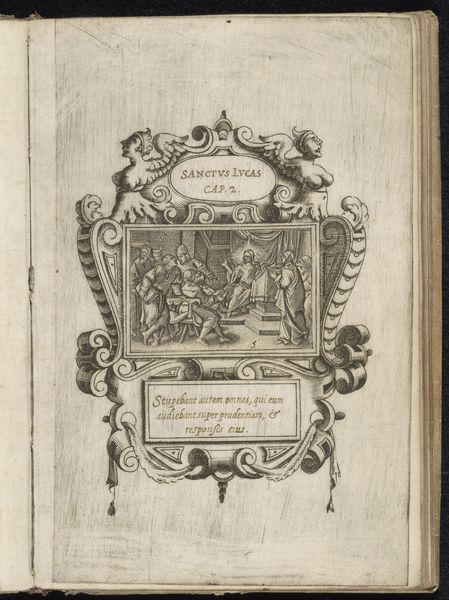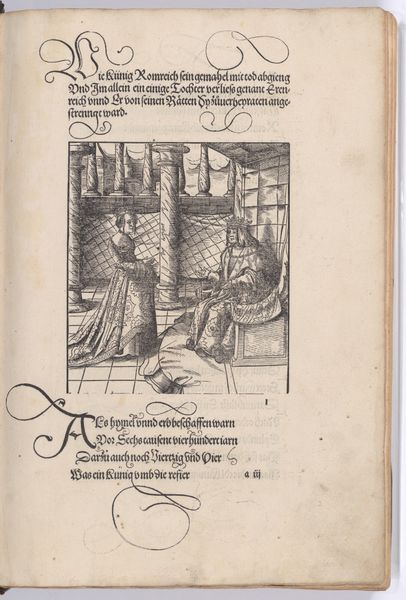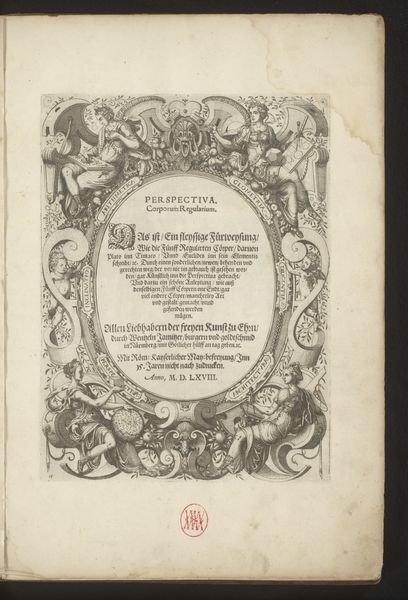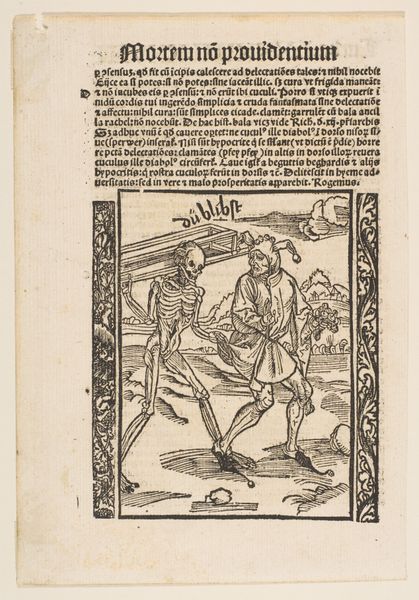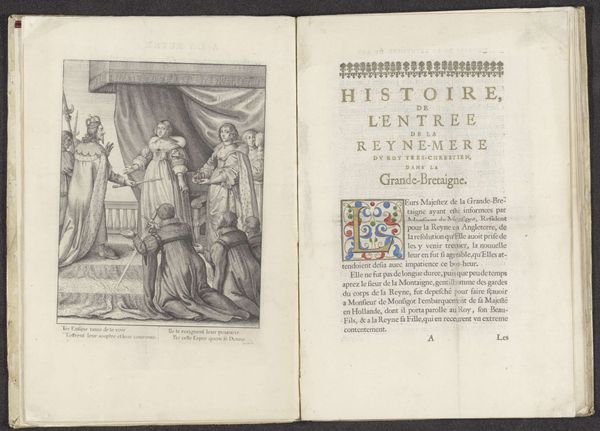
Trionfo Di Virtu. Libro Novo..., title page (recto) 1563
0:00
0:00
drawing, print, engraving
#
drawing
# print
#
figuration
#
11_renaissance
#
italian-renaissance
#
engraving
Dimensions: Overall: 9 13/16 x 7 7/8 in. (25 x 20 cm)
Copyright: Public Domain
Curator: Let's discuss "Trionfo Di Virtu. Libro Novo..., title page (recto)," an engraving dating back to 1563, currently housed at the Metropolitan Museum of Art. It’s the work of Matteo Pagano, a piece from the Italian Renaissance. Editor: You know, looking at it, I'm struck by its rather busy composition. It has this feeling of intricate domesticity—the black and white checkered floor adding this playful pattern beneath what appears to be several women gathered in gentle poses. A sleeping baby, and elaborate floral motifs frame everything! Curator: Exactly. This piece serves as the title page for a book offering diverse patterns intended to instruct noblewomen in creating needlework. These designs were not just aesthetic; needlework at the time was heavily associated with virtuous domesticity and skill, crucial for women of status. Editor: So, the "Triumph of Virtue" is essentially the triumph of skillful domestic labor and female accomplishment? I can't help but wonder about the inherent limitations of such a virtue defined almost exclusively by domestic skills. Curator: Absolutely, your point gets to the heart of feminist interpretations of this period. While celebrating the craftsmanship and creativity involved, we must also critically examine the constraints imposed on women. It brings up so many issues concerning class and gender roles of the Renaissance! Editor: I notice how the artist makes heavy use of these detailed linework. Despite being monochrome, there's this amazing variety in texture created just with hatching and cross-hatching. The gowns of the women especially display a sculptural volume that’s really impressive, and this elaborate framework all contributes to the visual richness. Curator: The floral borders also connect to that very "gentil" aesthetic announced on the page’s title, reinforcing notions of cultivated elegance valued at the time, and promoted by conduct manuals that outlined proper behavior. Editor: It’s remarkable how much can be communicated within this limited format—it’s more than just an instruction manual, it’s a snapshot into the values and aspirations of its time, though the lens is admittedly quite specific. Curator: Indeed, viewing "Trionfo Di Virtu" helps to illustrate broader themes that influenced and reflected social realities of 16th-century life. Editor: I guess I walked away from it considering how skills get valued differently over time, right? I'll ponder that for a while!
Comments
No comments
Be the first to comment and join the conversation on the ultimate creative platform.
